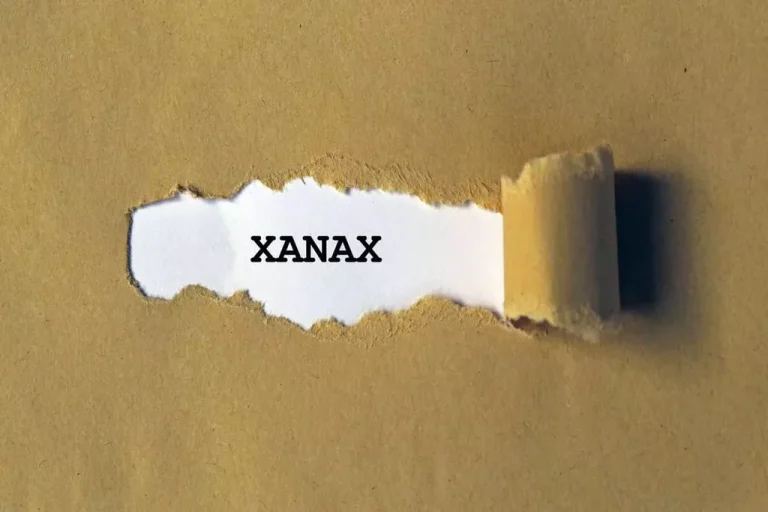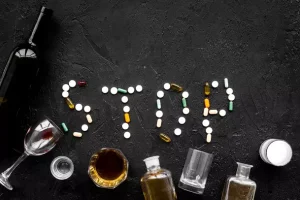
The most recent national survey assessing rates of illicit drug use and SUDs found that among individuals who report illicit drug use in the past year, approximately 15% meet criteria for one or more DUD (SAMHSA, 2019a). About 10% of individuals who report cannabis use in the past year meet criteria for a cannabis use disorder, while this proportion increases to 18%, 19%, 58%, and 65% of those with past year use of cocaine, opioids (misuse), methamphetamine, and heroin, respectively. These data suggest that non-disordered drug use is possible, https://ecosoberhouse.com/ even for a substantial portion of individuals who use drugs such as heroin (about 45%). However, they do not elucidate patterns of non-disordered use over time, nor the likelihood of maintaining drug use without developing a DUD. Administrative discharge due to substance use is not a necessary practice even within abstinence-focused treatment (Futterman, Lorente, & Silverman, 2004), and is likely linked to the assumption that continued use indicates lack of readiness for treatment, and that abstinence is the sole marker of treatment success.
1. Review aims
- Alcohol has historically, and continues to, hold an important role in social engagement and bonding for many.
- For some, drinking in moderation might be an option, especially as a stepping stone to abstinence.
- In Europe, about half (44–46%) of individuals seeking treatment for AUD have non-abstinence goals (Haug & Schaub, 2016; Heather, Adamson, Raistrick, & Slegg, 2010).
- These groups tend to include individuals who use a range of substances and who endorse a range of goals, including reducing substance use and/or substance-related harms, controlled/moderate use, and abstinence (Little, 2006).
The negative effects of your drinking may have turned you off of alcohol entirely, and that’s completely okay. If your reason for choosing abstinence is simply that you want to, that’s a perfectly valid reason to quit alcohol altogether. So, how can you tell whether moderation or abstinence is a better goal for you? In South Africa and Papua New Guinea, more than half of all traffic deaths are attributable to alcohol consumption.
4. Consequences of abstinence-only treatment

While your relationship with alcohol is entirely personal, reflecting on outside influences can be helpful when considering the relative benefits of sobriety or moderation. These influences may include family dynamics, workplace culture, friendships, strained relationships, and lifestyle elements. Though sobriety has a clear definition, you may still be asking yourself, what is sobriety, and what will it mean to me? Oftentimes it can mean learning how to manage cravings, engaging in alcohol treatment, finding community, and introducing alcohol alternatives into your daily life.
The disease burden from alcohol use disorders

In 1990, Marlatt was introduced to the philosophy of harm reduction during a trip to the Netherlands (Marlatt, 1998). He adopted the language and framework of harm reduction in his own research, and in 1998 published a seminal book on harm reduction strategies for a range of substances and behaviors (Marlatt, 1998). Marlatt’s work inspired the development of multiple nonabstinence treatment models, including harm reduction psychotherapy (Blume, 2012; Denning, 2000; Tatarsky, 2002). Additionally, while early studies of SUD treatment used abstinence as the single measure of treatment effectiveness, by the late 1980s and early 1990s researchers were increasingly incorporating psychosocial, health, and quality of life measures (Miller, 1994).
The Two Approaches

Additionally, in the United Kingdom, where there is greater access to nonabstinence treatment (Rosenberg & Melville, 2005; Rosenberg & Phillips, 2003), the proportion of individuals with opioid use disorder engaged in treatment is more than twice that of the U.S. (60% vs. 28%; Burkinshaw et al., 2017). Some clinicians and researchers posit that the field’s current emphasis on abstinence-based recovery may fail to engage many individuals with SUD because of perceptions that a goal of abstinence is required to engage with care. From a broader public health perspective, increasing access to effective SUD interventions and recovery support services is likely to enhance their overall impact (Glasgow et al., 2003). Thus, it is believed that greater adoption of flexible, patient-centered treatment and recovery approaches that support non-abstinence goals and harm reduction are likely to attract and engage more individuals in substance use related health behavior change, in turn benefitting public health. While there have been calls for abstinence-focused treatment settings to relax punitive policies around substance use during treatment (Marlatt et al., 2001; White et al., 2005), there may also be specific benefits provided by nonabstinence treatment in retaining individuals who continue to use (or return to use) during treatment.
Should we cut it out entirely, or is there a way to drink in moderation without adverse effects? Let’s delve into the pros and cons of both approaches to help us decide alcohol abstinence vs moderation which one is better for us. The map shows the share of all road traffic deaths attributed to alcohol consumption over the national legal limit for alcohol consumption.
Benefits and Drawbacks of Drinking in Moderation
Nonabstinence approaches to SUD treatment have a complex and contentious history, and significant social and political barriers have impeded research and implementation of alternatives to abstinence-focused treatment. We summarize historical factors relevant to non-abstinence treatment development to illuminate reasons these approaches are understudied. It is also worth mentioning some baseline (i.e., pre-treatment) differences between the three groups to get a sense of the types of individuals in each group. The Low group had a greater percentage of individuals with the maximum possible score on an alcohol problem screening tool compared to Medium and High groups (79% vs. 37% vs. 46%) as well as greater percentage who had received alcohol use disorder treatment in the past (33% vs. 8% vs. 15%).

Mindful Drinking vs. Moderate Drinking
In France in the 1920s, the average was 22.1 liters of pure alcohol per person per year. This equals 184 one-liter wine bottles per person per year.2 Note that in contrast to the modern statistics that are expressed in alcohol consumption per person older than 15 years, this includes children as well – the average alcohol consumption per adult was, therefore, even higher. Global trends on alcohol abstinence show a mirror image of drinking prevalence data. This is shown in the charts as the share of adults who had not drunk in the prior year and those who have never drunk alcohol. As such, I think these results are very encouraging in terms of offering another possible solution for individuals who are looking to reduce their alcohol consumption and the problems that keep creeping up along with it.
Drink Aware

Reframe supports you in reducing alcohol consumption and enhancing your well-being. Moderate drinking can limit adverse effects of alcohol and be a positive stepping stone in helping us quit or cut back further. Another potential disadvantage of alcohol abstinence is that some may find it too restrictive and unsustainable. When the root cause of our drinking isn’t addressed, avoiding alcohol can backfire into binge drinking.
- When we eliminate alcohol completely, we may experience alcohol withdrawal, which in some cases can be life-threatening.
- Drinking in moderation can teach individuals better drinking habits without eradicating alcohol from their lives.
- Indeed, about 95% of people with SUD say they do not need SUD treatment (SAMHSA, 2019a).
- Here we provide a brief review of existing models of nonabstinence psychosocial treatment, with the goal of summarizing the state of the literature and identifying notable gaps and directions for future research.
- Despite the growth of the harm reduction movement globally, research and implementation of nonabstinence treatment in the U.S. has lagged.
- Thus, studies will need to emphasize measures of substance-related problems in addition to reporting the degree of substance use (e.g., frequency, quantity).
Abstinence or Moderation? Drinking Goals in a Web-based Intervention for Veterans
This idea does not suggest that recovery is as simple as “mind-over-matter,” but Peele believes that people can set an intention to quit in line with their values without the need for inpatient or outpatient treatments. Support groups based on sobriety, like Alcoholics Anonymous (AA), find success through fellowship. AA works on social interaction where members give each other emotional support and practical tips to refrain from drinking. Research even suggests that fellowship can help more people achieve sobriety than therapy. This is because not only is it beneficial to be surrounded by those who share a similar goal to you, but it can also be validating to witness others’ struggles that mirror your own. Many treatment facilities and support groups aim to help individuals achieve and maintain long-term sobriety through abstinence.
Deixe um comentário